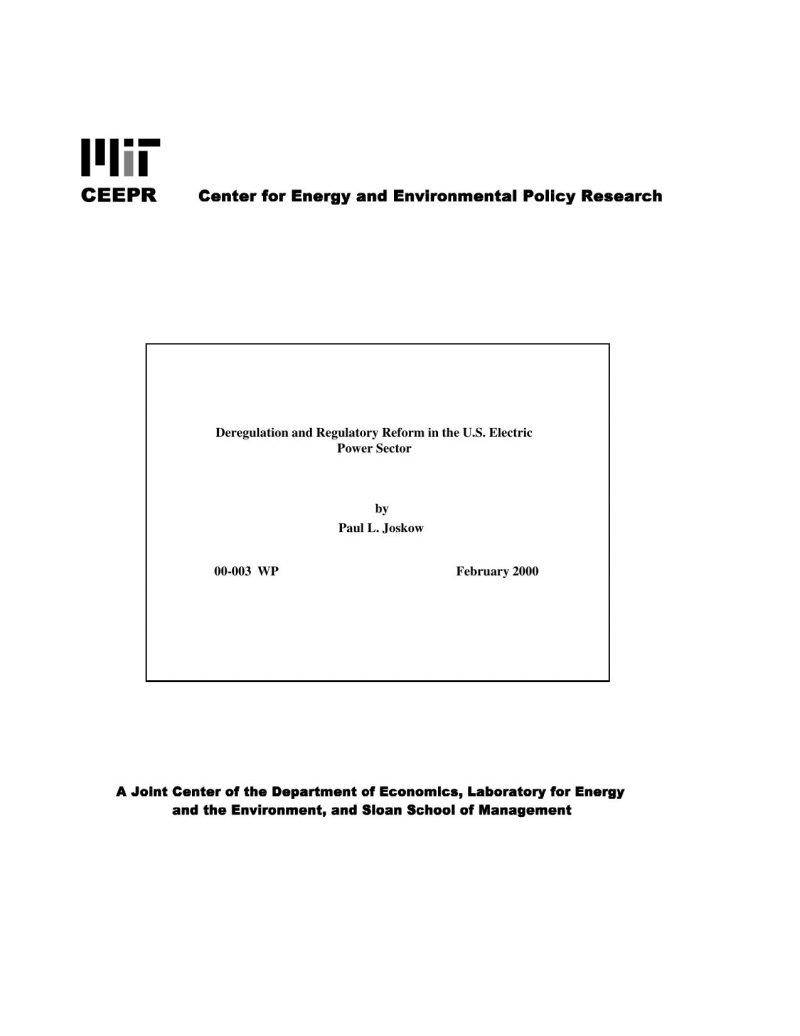Deregulation and Regulatory Reform in the U.S. Electric Power Sector
Paul L. Joskow
Feb-00
This paper discusses the evolution of wholesale and retail competition in the U.S electricity sector and associated industry restructuring and regulatory reforms. It begins with a discussion of the industry structure and regulatory framework that characterized the U.S. electric power industry during most of the 20th century and reviews the initial efforts to open the electricity industry to competitive suppliers of generating services during the 1980s and early 1990s. The economic and political pressures that emerged in the early 1990s for more fundamental reforms are discussed, including the stranded cost issue and its resolution. The architecture of the basic reform model that supports both wholesale and retail competition in the supply of generation services adopted by a number of pioneer states is developed. Recent trends in generation divestiture, mergers between electric utilities, and between electric and gas pipeline and distribution companies, and entry of unregulated merchant generating plants are then reviewed. The new institutional arrangements necessary to govern access to and the operations of electric transmission networks to support competition among competing decentralized generators of electricity are examined. Transmission pricing, market organization, congestion management and market power issues are included in this analysis. The structure and performance of California’s competitive electricity markets are discussed in detail as an example of the applications of these principles and the challenges that electricity sector restructuring must confront. Early experience with retail competition in California, Massachusetts, and Pennsylvania is reviewed. The paper concludes with an initial assessment of the benefits and costs of electricity sector restructuring to date in the U.S. and some thoughts regarding future challenges and trends.



